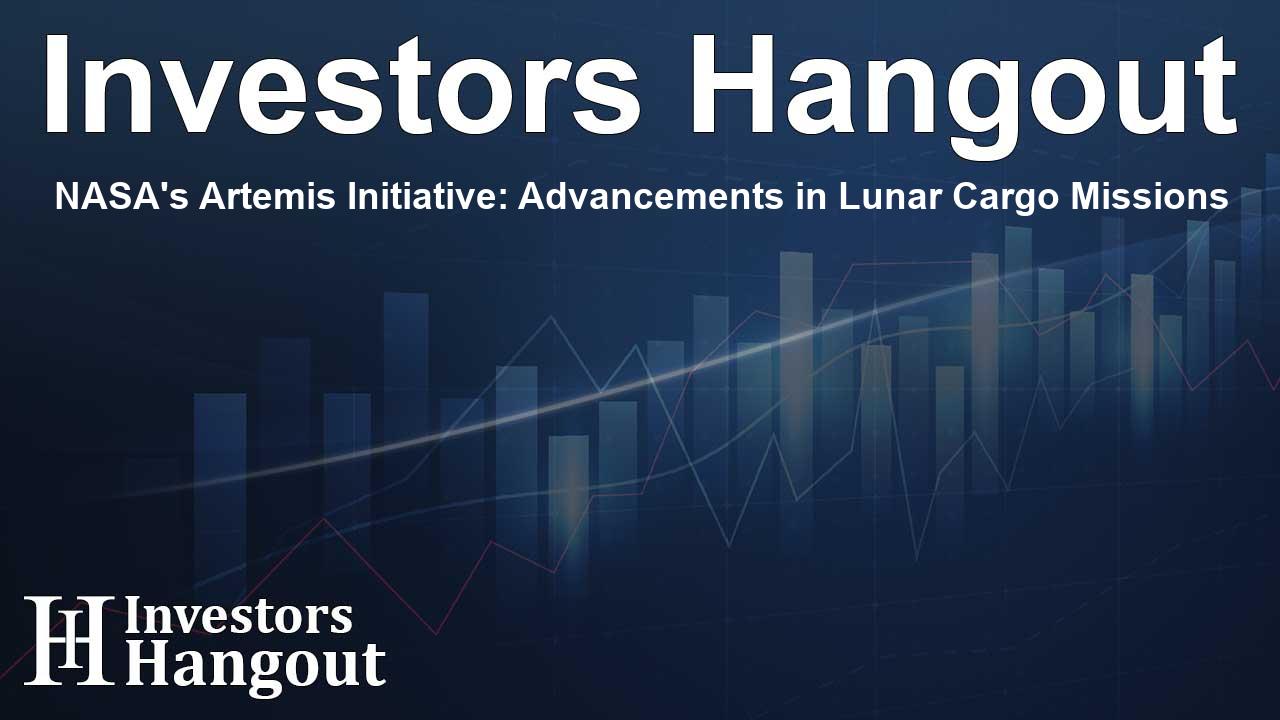NASA's Artemis Initiative: Advancements in Lunar Cargo Missions

NASA's Innovative Approach to Lunar Cargo Delivery
NASA is gearing up for exciting lunar exploration under the Artemis initiative, collaborating with industry leaders like Blue Origin and SpaceX. These partnerships aim to enhance scientific discovery and pave the way for a sustained human presence on the Moon. As the agency prepares to assign missions, it is focusing on the development of large cargo landers designed to transport vital equipment and infrastructure to the lunar surface.
Advancements in Human Landing Systems
Underlining the commitment to advancing space exploration, NASA plans to entrust Blue Origin and SpaceX with developing next-generation human landing systems. These large cargo landers are expected to deliver significant payloads, offering support to mission milestones including Artemis III, IV, and V. By refining these designs, NASA anticipates streamlining the integration of advanced technologies vital for lunar operations.
Upcoming Lunar Missions
NASA's approach includes demonstration missions aimed at enhancing the efficiency and capability of these cargo landers. Stephen D. Creech, NASA’s Assistant Deputy Associate Administrator, highlighted the importance of collaboration with international partners, noting that different approaches to landing systems offer flexibility for various mission requirements. This ensures a consistent rhythm of Moon missions, leading to ongoing scientific exploration.
Building on Past Efforts
Thinking ahead, NASA is planning at least two delivery missions for cargo. SpaceX's Starship cargo lander is set to transport a pressurized rover developed in partnership with JAXA to the lunar terrain potentially by the 2032 fiscal year. Meanwhile, Blue Origin is expected to deliver a lunar habitat by 2033 aiming to support future explorations and sustained habitation on the Moon.
The Future of Deep Space Exploration
Both companies are expected to continue their respective development trajectories under contracts designated specifically for NASA’s Lunar missions. NASA intends to issue proposals early in the next year, marking a crucial step in advancing lunar logistics. The ambitious Artemis campaign is designed not only to explore but also to establish a groundwork for future Mars missions.
Technology and Collaboration
This collaboration between NASA and private partners signifies a broader strategy to leverage the capabilities of commercial spaceflight, ensuring that missions are executed with cutting-edge technology and innovative solutions. The Artemis initiative’s framework includes essential components such as the SLS rocket, the Orion spacecraft, and supportive lunar systems that work together to enable human presence beyond Earth.
A Vision for the Future
With the foundational work already in progress, NASA sees the Artemis program as a gateway to exploring more of the Moon than ever before. It serves to teach how humankind can live and operate in extraterrestrial environments, laying vital groundwork for future missions to Mars and beyond. As these missions unfold, public interest and excitement surrounding lunar exploration are likely to reach new heights.
Frequently Asked Questions
What is the purpose of NASA's Artemis program?
The Artemis program aims to explore the Moon, establish a sustainable human presence, and prepare for future Mars missions through advanced technology and international collaboration.
Which companies are collaborating with NASA on lunar missions?
NASA is partnering with Blue Origin and SpaceX to develop large cargo landers that will deliver essential payloads to the lunar surface.
What are the expected outcomes of the lunar cargo missions?
The missions will enhance lunar infrastructure, support scientific exploration, and help establish a foothold for future human exploration of Mars.
When are the next missions scheduled to take place?
SpaceX aims to deliver a pressurized rover by 2032, with Blue Origin expected to provide a lunar habitat by 2033.
How does the Artemis program contribute to space exploration?
The program fosters international partnerships and innovation in space technology, paving the way for long-term human presence in deep space.
About Investors Hangout
Investors Hangout is a leading online stock forum for financial discussion and learning, offering a wide range of free tools and resources. It draws in traders of all levels, who exchange market knowledge, investigate trading tactics, and keep an eye on industry developments in real time. Featuring financial articles, stock message boards, quotes, charts, company profiles, and live news updates. Through cooperative learning and a wealth of informational resources, it helps users from novices creating their first portfolios to experts honing their techniques. Join Investors Hangout today: https://investorshangout.com/
Disclaimer: The content of this article is solely for general informational purposes only; it does not represent legal, financial, or investment advice. Investors Hangout does not offer financial advice; the author is not a licensed financial advisor. Consult a qualified advisor before making any financial or investment decisions based on this article. The author's interpretation of publicly available data shapes the opinions presented here; as a result, they should not be taken as advice to purchase, sell, or hold any securities mentioned or any other investments. The author does not guarantee the accuracy, completeness, or timeliness of any material, providing it "as is." Information and market conditions may change; past performance is not indicative of future outcomes. If any of the material offered here is inaccurate, please contact us for corrections.